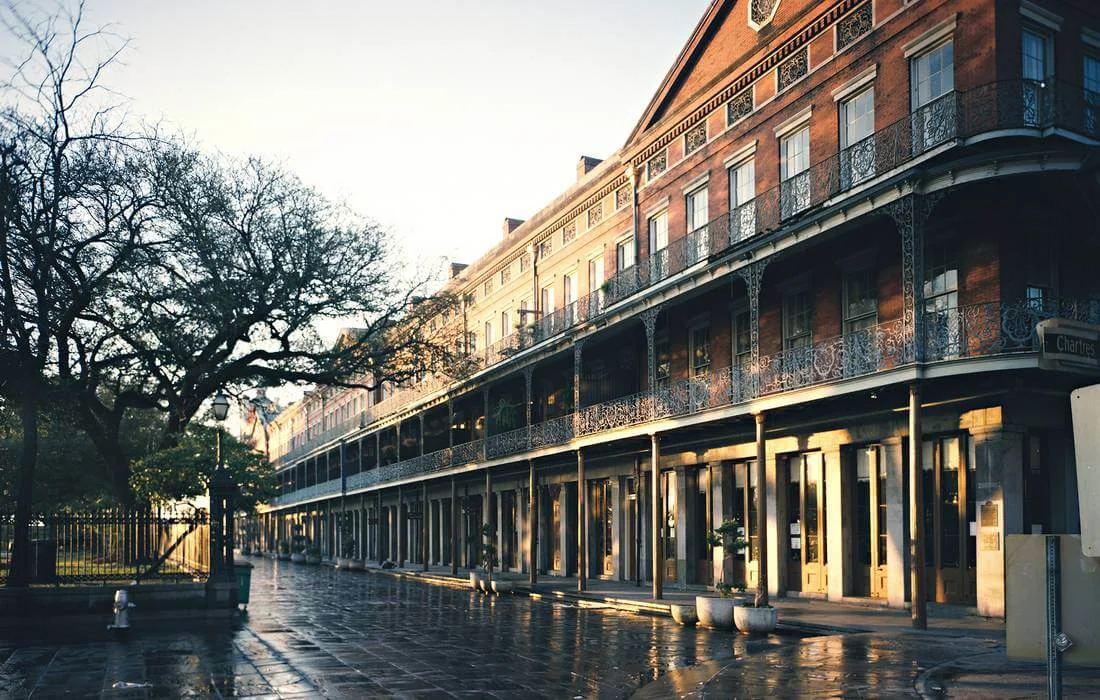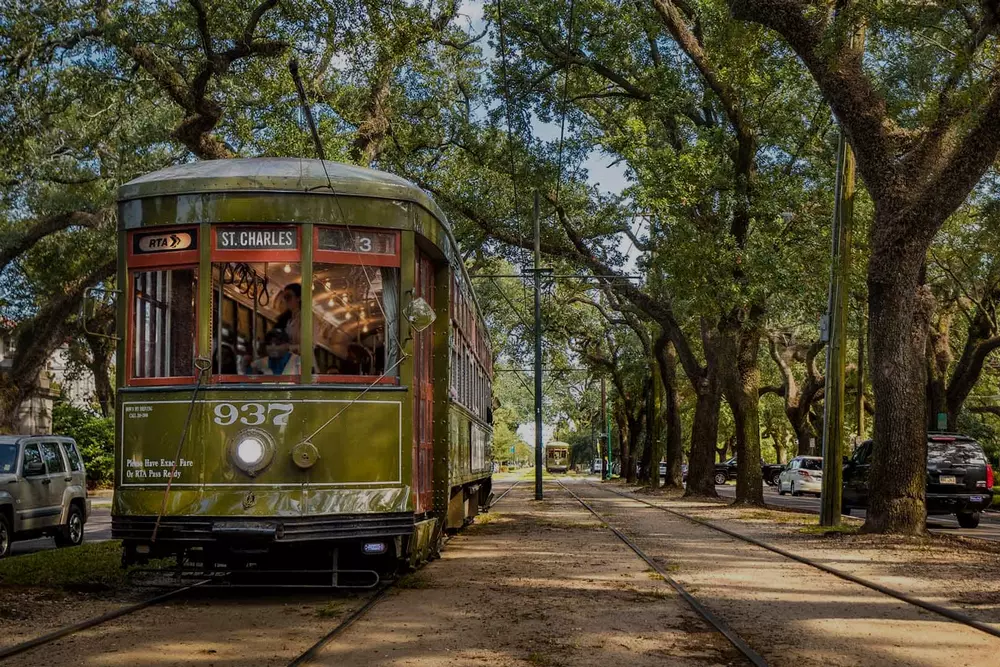Architecture and Significance
The Pontalba Buildings are a residential complex consisting of multi-family homes, situated in New Orleans on Jackson Square. Named after the builder, Baroness Pontalba, the daughter of Andres Almonaster, who built the Cabildo — the New Orleans City Hall. These buildings are reminiscent of the decadent and elegant architecture of New Orleans. Forming two sides of the famous Jackson Square, they extend the French Quarter.
Today, the ground floors of the buildings house shops and restaurants, while the upper floors remain as apartments, which are said to be the oldest continuously rented apartments in the United States.
The houses have garnered great admiration from visitors. Even the writer Truman Capote described them as “somberly elegant”. The complex includes 32 three-story houses, 16 on each side of the square. The exterior of the buildings consists of long galleries with wrought iron frames, contrasting both French and American styles. The floor layout is Creole.
The iron railings on the balconies were the first ever seen in New Orleans. If you look closely, you can notice the intertwined capital letters A and P, standing for Almonaster and Pontalba, her maiden name and married name.

The Pontalba Buildings helped redefine and embellish the main commercial district in New Orleans, allowing cultures to converge and share their languages, arts, and stories with each other.
History
Micaela's father, Andres Almonaster, was a wealthy notary and politician. In 1777, his fortune allowed him to purchase public lands on both sides of the town square, which he turned into profitable rental properties. Almonaster was seventy years old when Micaela was born. He died just three years later. In her widowed mother's marriage contract, she agreed to a costly dowry for her daughter, to secure an alliance with prominent cousins.
Like most Creoles, she married a first cousin. Her relatives turned out to be more interested in money than in family love and loyalty. After the wedding, Micaela was quickly whisked away from New Orleans to the family castle near Paris. Micaela bore her husband five children, but her father's influence on their marriage was catastrophic. Two years after the wedding, her husband's relatives forced Micaela to sign a power of attorney to her spouse, giving him control over her capital. By the 1830s, Micaela was effectively a prisoner of the Pontalba family, which made her life miserable. If she visited New Orleans, she was accused of desertion. Micaela's attempts to protect her estate enraged her father-in-law, who in November 1834 shot her at point-blank range with dueling pistols in the family castle. That evening, after brooding all day, he committed suicide with the same pistols. Micaela survived after four shots to the chest.
In New Orleans, a civil judge ordered the return of her property. The money received, the baroness invested in real estate and acquired large plots of land on Place d'Armes square, which later turned into Jackson Square. During the 1840s, she built two Parisian-style houses for more than $300,000.
From 1849 to 1851, the chief architect of these buildings was Henry Howard. Iron railings were used on the balcony of each house — something that much later became an important feature of the city's residential architecture. The baroness supervised the construction and, according to eyewitnesses of the time, specifically wore men's trousers to climb the stairs during the construction of the buildings.

Residential Monument of New Orleans
While many people believe these were the first apartment buildings, this fact has been contested by historian Christina Vella. She stated that the buildings were originally constructed as part of a block development — where small houses are built wall-to-wall. These private homes were later converted into apartments during the Great Depression of the 1930s.
In 1974, the Pontalba Buildings were declared a National Historic Landmark due to their early and unique architecture.
Today, the original sixteen townhouses have been reconfigured into 50 apartments, one of which is used by the Mayor of New Orleans, while the rest are under rent control. Visitors can still shop and dine at the numerous cafes on the ground floor.
Contemporaries described Baroness Pontalba as persistent, intelligent, spirited, nimble, insightful, and business-minded. In early portraits, Pontalba is depicted as a graceful and thoughtful woman, and in a photograph in her old age, as a hardened veteran with unmistakably masculine facial features. The residential complex left after her death stands as a living monument to the resilience of the human spirit.

After the death of the Baroness in 1874, her family assumed ownership of the buildings, which continued until the 1920s. However, they did not particularly care for the property. Consequently, part of the real estate was transferred to the Pontalba Museum Buildings Association in 1930.
Visiting this landmark, you will not only see living history but also feel the unique atmosphere of New Orleans. These renowned historical structures represent not just architectural heritage but also the cultural richness of the French Quarter. Immerse yourself in the world of ancient architecture, acquaint yourself with historical facts and legends that will bring the past to life right before your eyes.
Ready to discover the amazing world of New Orleans? American Butler offers tours that will let you see the best of this incredible city. Book your tour now and let us show you the beauty and mysteries of New Orleans, including the famous Pontalba Buildings and many other impressive sites.





























